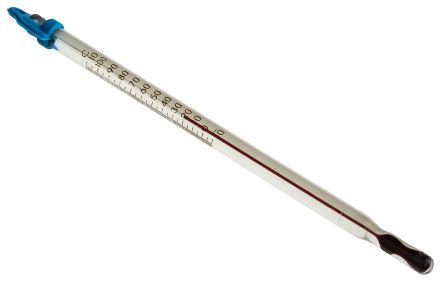I got sucked into a youtube video where this homesteader was having issues with his PV charging which seemed a bit mysterious until it came to light that he had not installed the temperature sensor which came with his inverter/charger. (It was winter in Idaho.) When he installed it, he installed it on the terminal post of the battery - and to be fair, that is exactly where it looked intuitively where it should go, it had a tab with a hole that looked suspiciously the same size as a ring terminal for a battery.
That seemed wrong to me on many levels. It prompted me to do a little googling on battery temperature sensors, and I found that many of them physically look just like that. A tab at the end with about a 3/8" or 5/16" hole, perfect size to add to a battery post.
I had always thought that ideally a sensor would be mounted about half way up vertically on the warmest cell of the warmest battery in the bank. As batteries are frequently packed together pretty tight to save space and reduce inter-battery cable length this is frequently in the 'interior' of the bank.
So I guess three questions came to mind about the practical installation of a battery sensor.
1. How important is the placement? Obviously one anywhere in the battery compartment is better than one coiled up in the equipment or in the shipping box, but once it is in the battery compartment, how big of deal is it exactly where it is?
2. Given that the terminals of a battery is the most likely place in a system where unwanted heat is likely to be generated, isn't attached to a battery terminal among the worst places in the battery box? Wouldn't having it in 'free air' somewhere in the box be better than bolting it to a terminal? If it is bad, why do so many manufacturers have the tab/hole design?
3. For the person wanting to mount the sensor on the side of a battery, what are good and bad ways of doing that? It would seem to me that anything as permanent as epoxy is dumb. Perhaps some silicone RTV makes sense? The only time I had opportunity to install one, and I don't even recall what it physically looked like, I attached it to the side of a middle battery with a big 'X' of duct tape - was that dumb for any reason?
School me please.
That seemed wrong to me on many levels. It prompted me to do a little googling on battery temperature sensors, and I found that many of them physically look just like that. A tab at the end with about a 3/8" or 5/16" hole, perfect size to add to a battery post.
I had always thought that ideally a sensor would be mounted about half way up vertically on the warmest cell of the warmest battery in the bank. As batteries are frequently packed together pretty tight to save space and reduce inter-battery cable length this is frequently in the 'interior' of the bank.
So I guess three questions came to mind about the practical installation of a battery sensor.
1. How important is the placement? Obviously one anywhere in the battery compartment is better than one coiled up in the equipment or in the shipping box, but once it is in the battery compartment, how big of deal is it exactly where it is?
2. Given that the terminals of a battery is the most likely place in a system where unwanted heat is likely to be generated, isn't attached to a battery terminal among the worst places in the battery box? Wouldn't having it in 'free air' somewhere in the box be better than bolting it to a terminal? If it is bad, why do so many manufacturers have the tab/hole design?
3. For the person wanting to mount the sensor on the side of a battery, what are good and bad ways of doing that? It would seem to me that anything as permanent as epoxy is dumb. Perhaps some silicone RTV makes sense? The only time I had opportunity to install one, and I don't even recall what it physically looked like, I attached it to the side of a middle battery with a big 'X' of duct tape - was that dumb for any reason?
School me please.

Comment